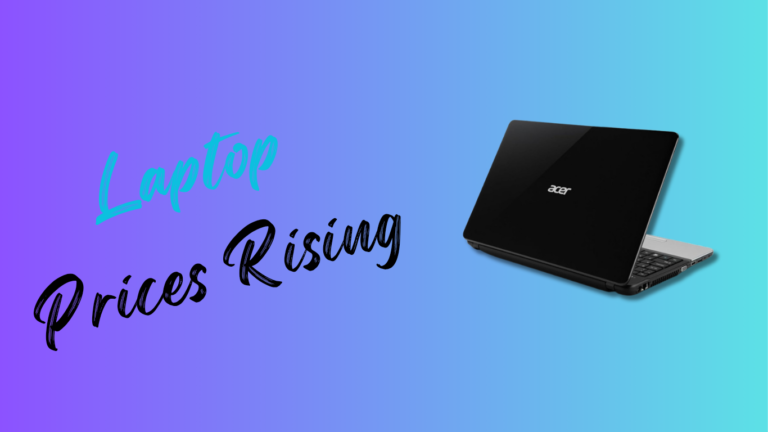Acer CEO Jason Chen has confirmed that laptop prices will rise by 10% due to increased tariffs on key components. The global PC industry is experiencing significant cost pressures as governments introduce new trade restrictions. These tariffs impact essential parts of laptops, making manufacturing more expensive.
According to market analysts, the cost of importing semiconductor chips, batteries, and display panels has surged, forcing manufacturers to pass the burden onto consumers. The rising prices will particularly affect budget and mid-range laptops, which rely on affordable production costs to remain competitive.
Higher Import Duties Affecting Key Components
Governments worldwide impose tariffs on imported goods to protect local industries and generate revenue. However, these import duties have led to unintended consequences for the tech industry. Semiconductor chips, which serve as the backbone of modern laptops, are now subject to higher taxes. This increases production costs for manufacturers like Acer, HP, Dell, and Lenovo.
Battery components and high-quality display panels are also affected. These parts are often imported from countries like China, South Korea, and Taiwan, where tariffs have increased significantly. The additional expenses incurred in sourcing these parts contribute to the 10% price hike in laptops.
Supply Chain Disruptions Adding to Costs
Apart from tariffs, supply chain issues have worsened the situation. The global semiconductor shortage, which began during the COVID-19 pandemic, continues to affect laptop production. Many factories still struggle to meet demand due to a lack of raw materials.
Freight costs have also increased, further driving up expenses. Shipping delays, rising fuel prices, and labor shortages have made it more expensive for manufacturers to transport components and finished products. These additional costs are being passed on to retailers and consumers.
Retailers and Consumers Preparing for Price Surge
Retailers anticipate a decline in demand as laptop prices rise. Many consumers are looking for alternatives, such as refurbished models, older laptop generations, or budget-friendly options. Some retailers are offering discounts and promotions to clear existing stock before the new pricing takes effect.
Businesses that rely on bulk laptop purchases, such as educational institutions and corporate sectors, are reconsidering their procurement strategies. Many are opting for lease-based models or delaying purchases until prices stabilize.
Industry Experts Call for Policy Revisions
Industry leaders are urging policymakers to reconsider these tariff regulations to prevent further economic strain on consumers and businesses. Trade organizations argue that lowering tariffs on critical technology components could help stabilize laptop prices.
Economists predict that if tariffs remain in place, laptop prices may continue to rise over the next year. The long-term impact depends on government trade policies, supply chain recovery, and technological advancements in manufacturing.
What This Means for Consumers
With prices expected to rise, experts recommend that consumers who need a laptop purchase one before the price hike takes full effect. Those on a budget should consider older models, refurbished laptops, or alternative financing options.
As manufacturers adapt to these changes, the global laptop market will continue to evolve. Consumers, businesses, and retailers will need to monitor pricing trends and make informed purchasing decisions in the months ahead.

